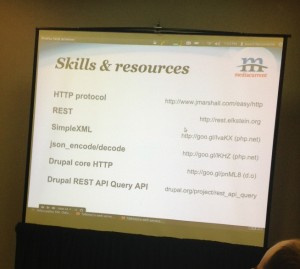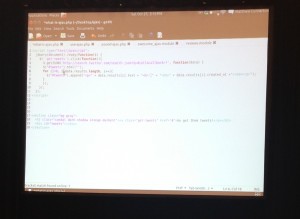Joind.in is the replacement for all those paper submission forms that get left on the floor at the end of an event. The site gives details of events past, present and future, the sessions, timetable and speakers at each, and allows all attendees to register and leave feedback – for the sessions and for the event itself.
As well as the website, there is an open API and applications are freely available for iphone and android, and there is a wordpress plugin to show your event information on your own site.
via About – Joind.in.
While the service focuses on feedback for tech events, the code is open source and available on Github so it could adapted to run for other types of events like academic conferences. Imagine a service that provides speaker/session evaluations for AALS, AALL, CALIcon, and all other legal and law school conferences and symposia in one place. One site to get information about upcoming events and evaluate past events. Sounds like a good idea to me.






